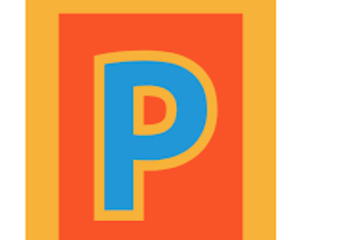We found 42 results that contain "practical fba"
Posted on: #iteachmsu

DISCIPLINARY CONTENT
HR Collections
Description is the pattern of narrative development that aims to make vivid a place, object, character, or group. Description is one of four rhetorical modes, along with exposition, argumentation, and narration. In practice it would be difficult to write literature that drew on just one of the four basic modes.
Authored by:
Macus Tyson

Posted on: #iteachmsu


HR Collections
Description is the pattern of narrative development that aims to ma...
Authored by:
DISCIPLINARY CONTENT
Tuesday, Oct 27, 2020
Posted on: #iteachmsu

ASSESSING LEARNING
Description is the pattern of narrative development that aims to make vivid a place, object, charact
Description is the pattern of narrative development that aims to make vivid a place, object, character, or group. Description is one of four rhetorical modes, along with exposition, argumentation, and narration. In practice.Description is the pattern of narrative development that aims to make vivid a place, object, character, or group. Description is one of four rhetorical modes, along with exposition, argumentation, and narration. In practice.
Authored by:
Description is the pattern of narrative development that ...

Posted on: #iteachmsu


Description is the pattern of narrative development that aims to make vivid a place, object, charact
Description is the pattern of narrative development that aims to ma...
Authored by:
ASSESSING LEARNING
Wednesday, Sep 2, 2020
Posted on: #iteachmsu

DISCIPLINARY CONTENT
Description is the pattern of narrative development that aims to make vivid a place, object, charact
Description is the pattern of narrative development that aims to make vivid a place, object, character, or group. Description is one of four rhetorical modes, along with exposition, argumentation, and narration. In practiceDescription is the pattern of narrative development that aims to make vivid a place, object, character, or group. Description is one of four rhetorical modes, along with exposition, argumentation, and narration. In practiceDescription is the pattern of narrative development that aims to make vivid a place, object, character, or group. Description is one of four rhetorical modes, along with exposition, argumentation, and narration. In practice.
Authored by:
Description is the pattern of narrative development that ...

Posted on: #iteachmsu


Description is the pattern of narrative development that aims to make vivid a place, object, charact
Description is the pattern of narrative development that aims to ma...
Authored by:
DISCIPLINARY CONTENT
Wednesday, Sep 2, 2020
Posted on: #iteachmsu

DISCIPLINARY CONTENT
Poor Listening Skills
Do you zone out during long business meetings? Did your husband forget to pick up your child at baseball practice, even though you called to remind him on his way home? Problems with attention result in poor listening skills in many adults with ADHD, leading to a lot of missed appointments and misunderstandings.
Link test :https://www.bigcommerce.com/ecommerce-answers/what-is-an-alt-tag-and-how-does-it-impact-seo/
Link test :https://www.bigcommerce.com/ecommerce-answers/what-is-an-alt-tag-and-how-does-it-impact-seo/
Posted by:
Chathuri Super admin..
Posted on: #iteachmsu

Poor Listening Skills
Do you zone out during long business meetings? Did your husband for...
Posted by:
DISCIPLINARY CONTENT
Tuesday, Sep 15, 2020
Posted on: #iteachmsu

PEDAGOGICAL DESIGN
technology Development
https://www.youtube.com/watch?v=vr8pNgjI9Ig
new technology
In technology development significant advances are as often the result of a series of evolutionary steps as they are of breakthroughs. This is illustrated by the examples of the steam engine and the computer. Breakthroughs, such as the transistor, are relatively rare, and are often the result of the introduction of new knowledge coming from a quite different area. Technology development is often difficult to predict because of its complexity; practical considerations may far outweigh apparent scientific advantages, and cultural factors enter in at many levels. In a large technological organization problems exist in bringing scientific knowledge to bear on development, but much can be done to obviate these difficulties.
new technology
In technology development significant advances are as often the result of a series of evolutionary steps as they are of breakthroughs. This is illustrated by the examples of the steam engine and the computer. Breakthroughs, such as the transistor, are relatively rare, and are often the result of the introduction of new knowledge coming from a quite different area. Technology development is often difficult to predict because of its complexity; practical considerations may far outweigh apparent scientific advantages, and cultural factors enter in at many levels. In a large technological organization problems exist in bringing scientific knowledge to bear on development, but much can be done to obviate these difficulties.
Authored by:
Chathuri

Posted on: #iteachmsu


technology Development
https://www.youtube.com/watch?v=vr8pNgjI9Ig
new technology&n...
new technology&n...
Authored by:
PEDAGOGICAL DESIGN
Tuesday, Oct 15, 2019
Posted on: #iteachmsu

An Overview of the Syllabus and its Role at MSU
What a syllabus is
A syllabus is a synecdoche for a course of study—a part of the curricular experience that represents the whole. They are often the very first course texts our students encounter and, accordingly, they frame and preface learning in powerful ways. On one hand, they communicate practical and structural details—where and when a course meets, what to read, and how to contact an instructor. But they also express intellectual and discipline-specific expectations.
As a special genre of educational texts, syllabi have taken various forms and played various roles over many centuries. In the 17th century ‘syllabus’ was synonymous with ‘table’ or ‘index.’ They served as a structural preview for manuscripts or a list of speakers and topics for a lecture series—they were a means of organizing texts, ideas, and experience. Although that core function remains, post-secondary syllabi have expanded significantly in volume and purview over the past forty years.
A syllabus is a synecdoche for a course of study—a part of the curricular experience that represents the whole. They are often the very first course texts our students encounter and, accordingly, they frame and preface learning in powerful ways. On one hand, they communicate practical and structural details—where and when a course meets, what to read, and how to contact an instructor. But they also express intellectual and discipline-specific expectations.
As a special genre of educational texts, syllabi have taken various forms and played various roles over many centuries. In the 17th century ‘syllabus’ was synonymous with ‘table’ or ‘index.’ They served as a structural preview for manuscripts or a list of speakers and topics for a lecture series—they were a means of organizing texts, ideas, and experience. Although that core function remains, post-secondary syllabi have expanded significantly in volume and purview over the past forty years.
Posted by:
Super Admin

Posted on: #iteachmsu

NAVIGATING CONTEXT
Social and Emotional Safety
Creating a safe climate takes time and work. These are some of the most important components:
Active teaching of social-emotional skills
Attention to creating positive relationships
Bullying prevention and intervention
Community building
Explicit focus on understanding and appreciating differences
Meaningful conflict resolution
Teaching students to challenge bias and exclusion
Critical Component #5: Values-Based Classroom Management
Classroom management is central to classroom culture. Classroom management systems must support safe, inclusive communities by promoting high standards for respectful interaction; incorporating student-generated classroom norms; teaching conflict resolution; and actively addressing all instances of bias, bullying, exclusion, or disrespect.
Disciplinary incidents must transition from punishment to opportunities for growth, restitution, and community building. For community respect to be a core classroom value, students should not be cast out of the group but rather given the support needed to be positive, contributing members of their classroom community.
Finally, classroom management practices must reflect fairness, equity, and cultural awareness.
Active teaching of social-emotional skills
Attention to creating positive relationships
Bullying prevention and intervention
Community building
Explicit focus on understanding and appreciating differences
Meaningful conflict resolution
Teaching students to challenge bias and exclusion
Critical Component #5: Values-Based Classroom Management
Classroom management is central to classroom culture. Classroom management systems must support safe, inclusive communities by promoting high standards for respectful interaction; incorporating student-generated classroom norms; teaching conflict resolution; and actively addressing all instances of bias, bullying, exclusion, or disrespect.
Disciplinary incidents must transition from punishment to opportunities for growth, restitution, and community building. For community respect to be a core classroom value, students should not be cast out of the group but rather given the support needed to be positive, contributing members of their classroom community.
Finally, classroom management practices must reflect fairness, equity, and cultural awareness.
Authored by:
Jeni

Posted on: #iteachmsu


Social and Emotional Safety
Creating a safe climate takes time and work. These are some of the ...
Authored by:
NAVIGATING CONTEXT
Thursday, Dec 31, 2020
Posted on: #iteachmsu

DISCIPLINARY CONTENT
By Shravya: Tips for using a collaboration software tool -- edited
When project managing a distributed team in a variety of locations, a collaboration software (or project management) tool is an effective way to keep everyone on the same page and all of your project information in one place. However, using a great tool doesn’t magically make collaboration happen. Here are 10 best practices when using a collaboration software tool:
Share proactively - Assign team members to the tasks they need to be aware of and @mention them in the comments, so they receive alerts when the ball is in their court.
Put every project into your collaboration project management tool - Use your tool as a single source of all project-related materials and notes. This will make the material easy to find for everyone, no matter when they joined the project.
Create water cooler channels - Creating channels in your communication tools where team members can discuss non-work related topics allows them to get to know each other and be social even from afar.
Celebrate small wins - Collaboration tools are a great place to share victories, no matter how big or small. Even a short message can go a long way.
Balance the load - You can’t collaborate well if you’re overloaded with work. Use your tool’s visibility and resource management features to ensure project tasks are balanced among your team members.
Share proactively - Assign team members to the tasks they need to be aware of and @mention them in the comments, so they receive alerts when the ball is in their court.
Put every project into your collaboration project management tool - Use your tool as a single source of all project-related materials and notes. This will make the material easy to find for everyone, no matter when they joined the project.
Create water cooler channels - Creating channels in your communication tools where team members can discuss non-work related topics allows them to get to know each other and be social even from afar.
Celebrate small wins - Collaboration tools are a great place to share victories, no matter how big or small. Even a short message can go a long way.
Balance the load - You can’t collaborate well if you’re overloaded with work. Use your tool’s visibility and resource management features to ensure project tasks are balanced among your team members.
Authored by:
Vijaya

Posted on: #iteachmsu


By Shravya: Tips for using a collaboration software tool -- edited
When project managing a distributed team in a variety of locations,...
Authored by:
DISCIPLINARY CONTENT
Tuesday, Jul 29, 2025


